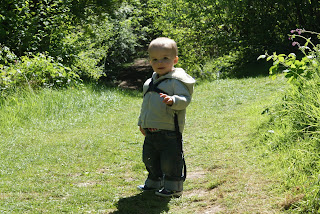An article for a newsletter, about gardening, children and me.
Gardening for me is a career that has constantly evolved. Many forms have the work taken, and thankfully, obviously some would say, the plants have always taken centre stage. Whilst I’ve found many different ways to interact with my profession; the design of gardens, botany, or the history of gardening - the one thing that it all comes down to is the growing and cultivation of plants.
My first real memory of caring for a plant was in my early teens, when I somehow got hold of a spare snap dragon plant just a few centimetres tall. It must have been a spare bedding plant from the garden one spring time, but I took it and decided to grow it on my bedroom window sill in a pot, and experiment. I carefully watered it as the weeks went by, and was at the time amazed by the speed at which it grew! Before long it needed support, so a stick I acquired to prop it up, to which I gently tied the plant with string. That snap dragon, to me grew far larger than anyone else’s could have done, all because of my foresight to take it indoors to grow, or so I thought at the time.
Naturally, that plant produced the tallest, and most colourful snap dragon flowers anyone could have seen, and all due to my talented green fingers. I even remember a tinge of guilt having kept it all to myself, not that I could have blogged about it in those days! Of course, the plant eventually passed its season by, hurried along slightly by the odd missed watering. In addition to this I remember a key turn off for me was mildew striking, although I didn’t know what it was at the time.
I’d seen gardening in action many years before this of course, my grandad having been a gardener amongst other trades. All I can remember of his first garden was his mint patch, the scent being unbelievably strong, I remember too that it was vigorous and trying to escape its lot. I remember his next garden, little front and rear gardens at his retirement bungalow; it was always so neatly trimmed and flowered beautifully. I remember he wasn’t exactly a spring chicken, but I knew that somehow he was very active tending his garden, and he loved it.
My work over many years has seen me in gardens visited by the public for all sorts of reasons, my current place of work being Compton Verney, in south Warwickshire. At all of ‘my’ gardens, the latest being no exception, children, education and the gardens have been a regular feature of my work. Not to directly deliver classes, but to nurture the environment to allow their experience of plants and nature. Education or the discovery of plants, to me links daily life now, with that of my childhood, and children. I watch and help my children to discover the natural environment, from simple wild flowers in the grass, to mammoth trees in gardens. I secretly hope they too can discover my fascination for plants, and that some day they too will feel the same pride and sense of discovery that I felt when I grew and nurtured my first plant.
If I can encourage caring for plants, nature and the environment to my children, and maybe others, through my love and connection with plants, then I’ll feel I’ll have passed on a gift that’ll last a lifetime. I’ll have helped to instil a general caring and thoughtful attitude, which I hope will transfer to other areas of their lives. The cultivation of plants offers so many benefits to so many people, children, amongst others being not only the keenest to learn, but the group who can gain the most.
Gary Webb
Twitter: @garywebb1


